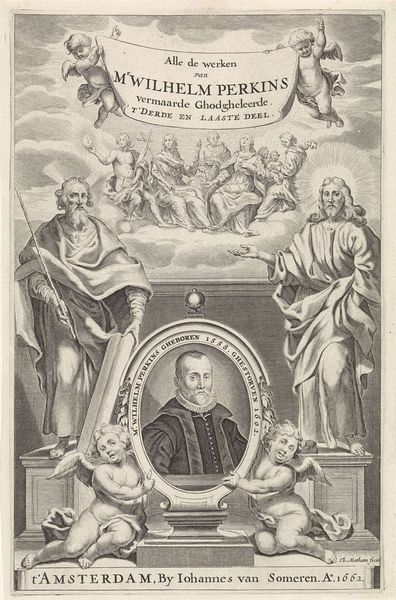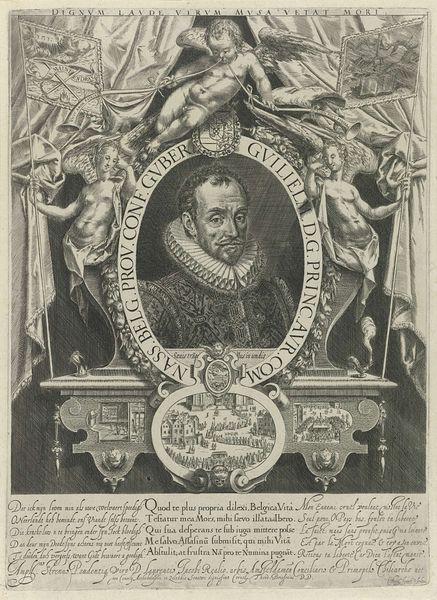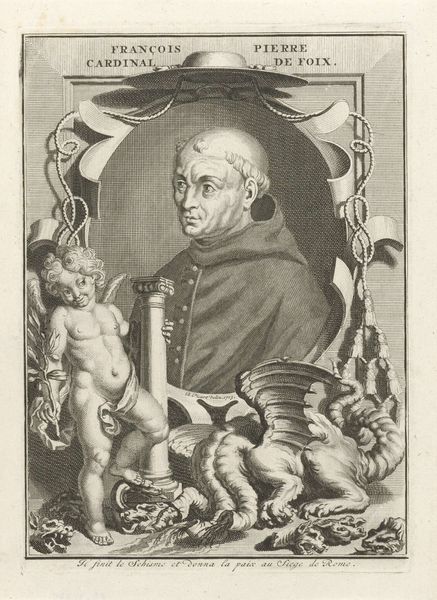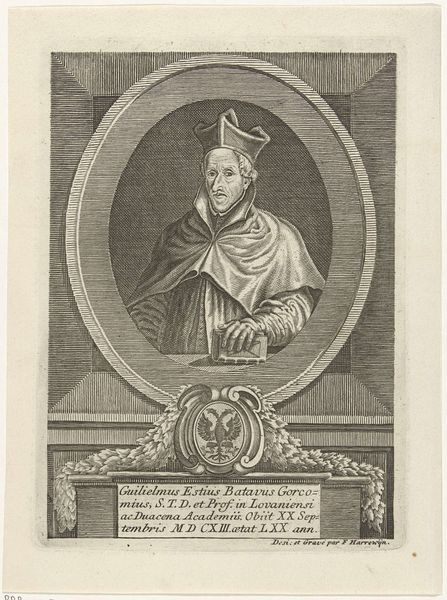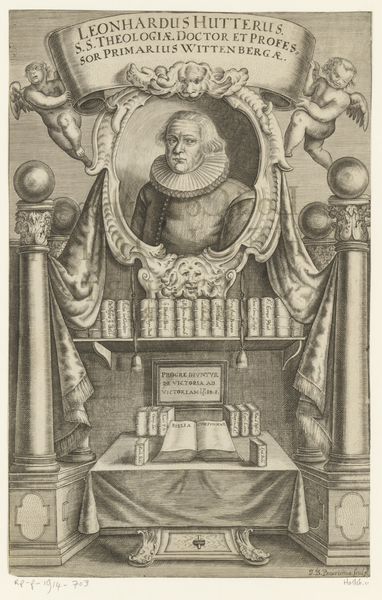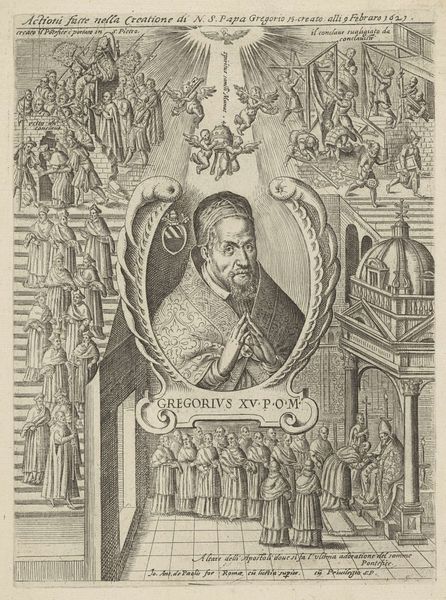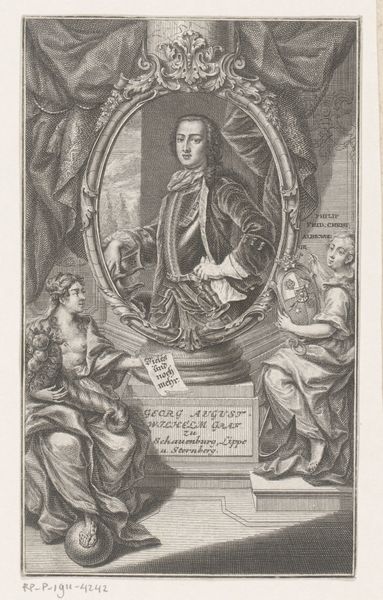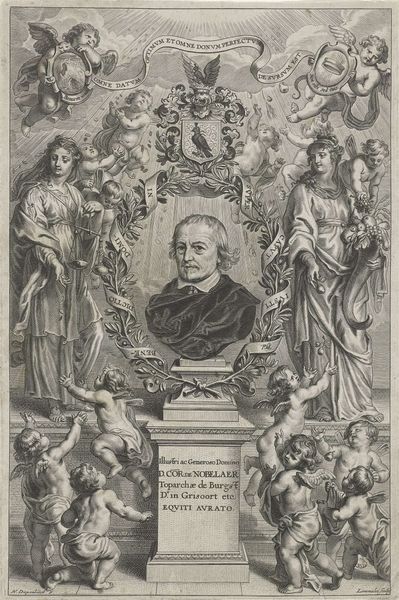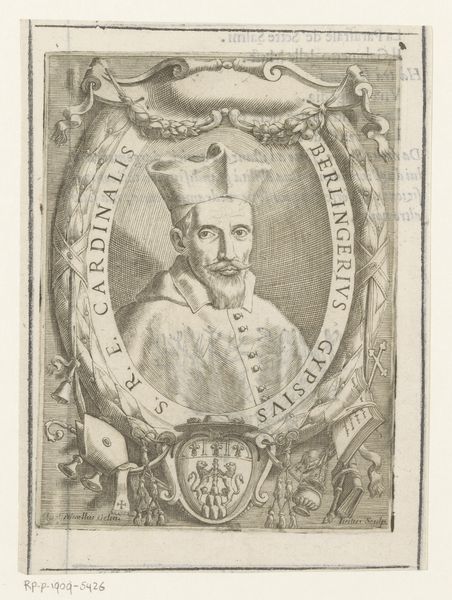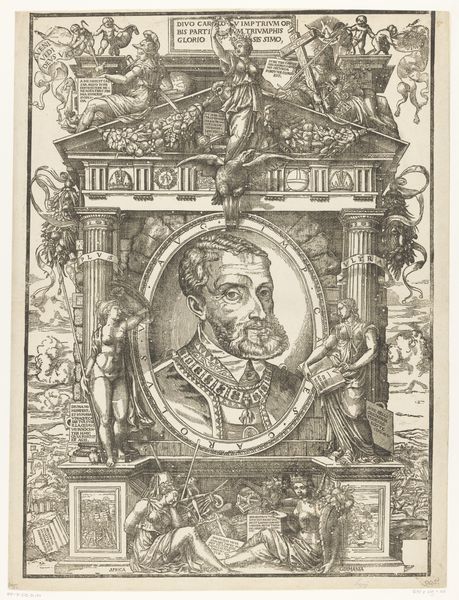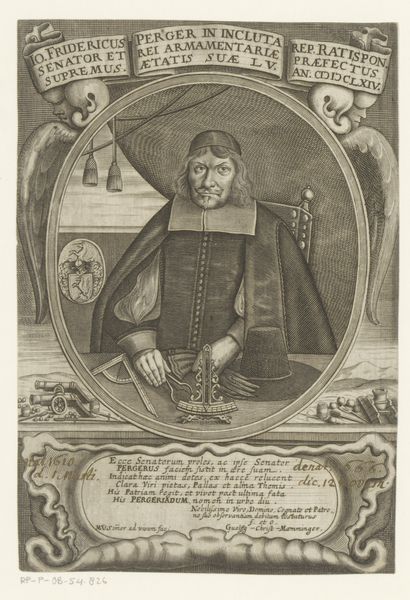
print, engraving
#
portrait
#
baroque
#
pen drawing
# print
#
figuration
#
line
#
history-painting
#
engraving
Dimensions: height 333 mm, width 217 mm
Copyright: Rijks Museum: Open Domain
Editor: This is a print from 1660, "Portret van Jeremias Drexel," made by W (?) van Merel. It’s… a lot. My first impression is how crowded it feels, almost overwhelming with all the figures and symbols surrounding the central portrait. How do you interpret this work? Curator: It *is* densely packed, isn’t it? But that density speaks volumes. Think of Baroque art as a language of layered meanings. The portrait itself, of course, honors Jeremias Drexel, but everything *around* him elevates him beyond a simple likeness. See how angels and celestial figures surround the upper portion, implying divine favor or his saintly virtues. Editor: Yes, I see the angels… and what looks like Christ in the very top center. But there are also figures at the bottom that seem… earthbound? Curator: Precisely. They represent the earthly realm, struggles, perhaps even temptations overcome. Consider the objects at the bottom as well: the writing implements. What do they suggest about Drexel's legacy? Editor: That he was a scholar, a writer, maybe a teacher? Someone who produced knowledge? Curator: Exactly! This image doesn’t just show us what he looked like, but what he *represented*. It’s a careful construction of his persona, designed to project authority and piety through symbolic language that would have been readily understood by viewers at the time. The iconography creates cultural memory around Drexel, positioning him within a larger religious and intellectual tradition. Editor: So, it’s like a visual biography, packed with symbols instead of words? Curator: Precisely. It's fascinating how much information and persuasive power can be conveyed through images and their careful arrangement. These emblems resonated deeply, shaping perceptions and reinforcing cultural values. Editor: I never thought about a portrait needing that much unpacking. I guess there's more to see than just the face. Curator: Indeed. It’s a window into a world of symbolic thought. And each element carefully considered.
Comments
No comments
Be the first to comment and join the conversation on the ultimate creative platform.
